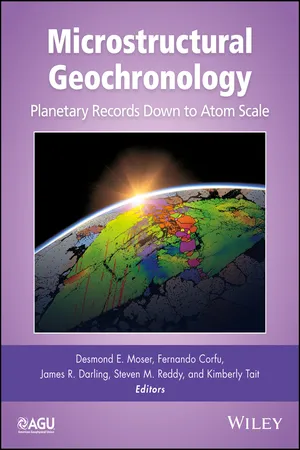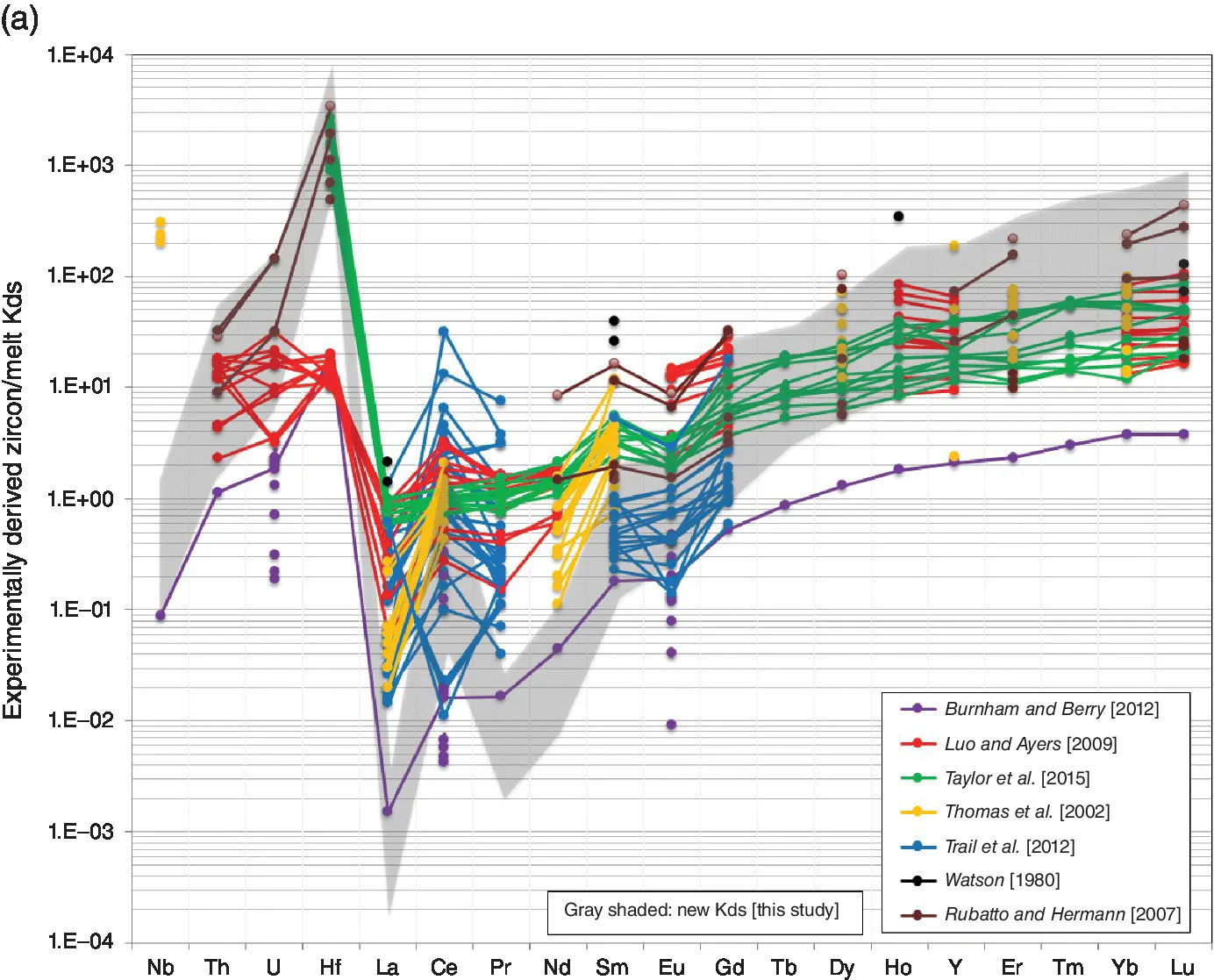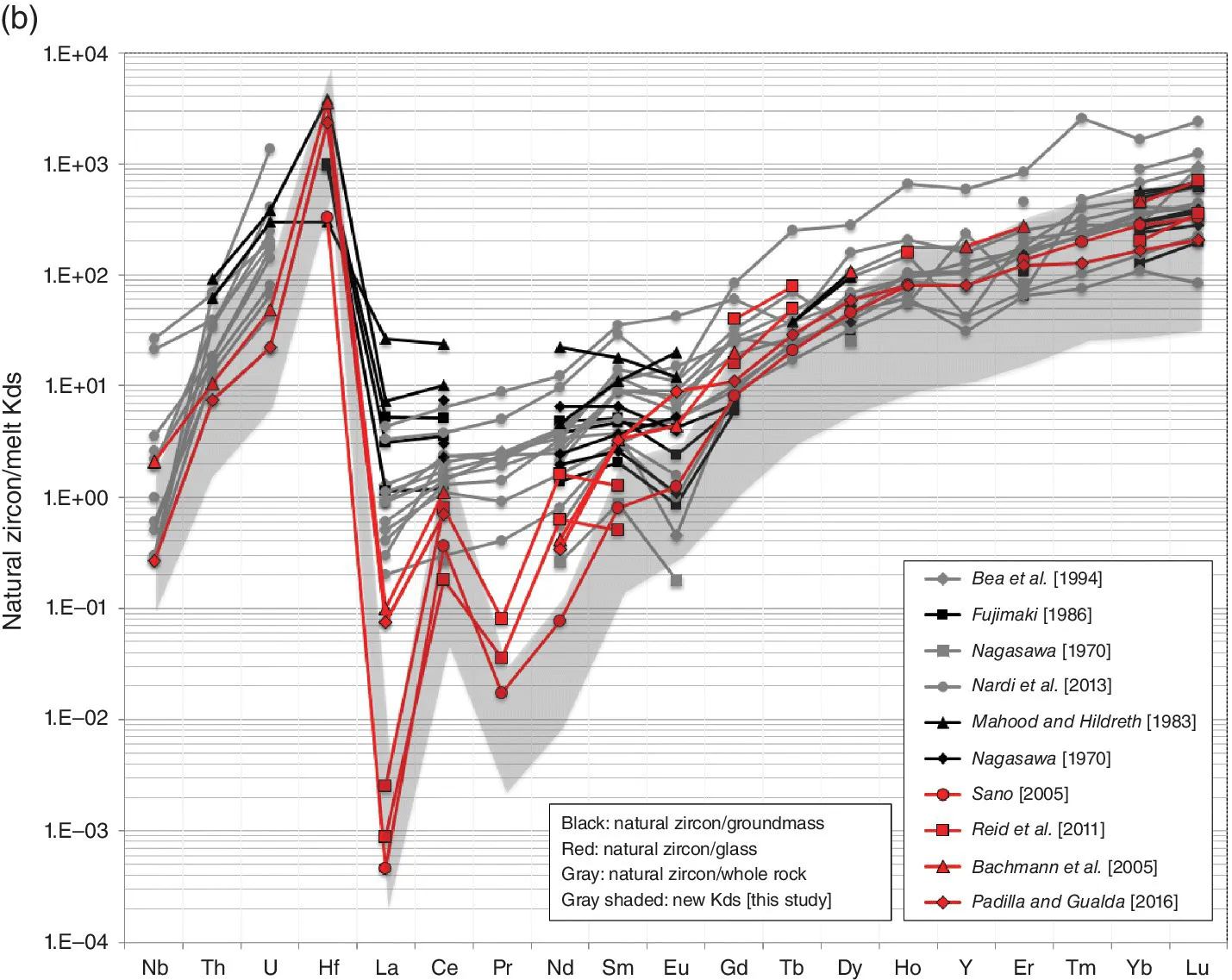
Microstructural Geochronology
Planetary Records Down to Atom Scale
- English
- ePUB (mobile friendly)
- Available on iOS & Android
Microstructural Geochronology
Planetary Records Down to Atom Scale
About This Book
Microstructural Geochronology
Geochronology techniques enable the study of geological evolution and environmental change over time. This volume integrates two aspects of geochronology: one based on classical methods of orientation and spatial patterns, and the other on ratios of radioactive isotopes and their decay products.
The chapters illustrate how material science techniques are taking this field to the atomic scale, enabling us to image the chemical and structural record of mineral lattice growth and deformation, and sometimes the patterns of radioactive parent and daughter atoms themselves, to generate a microstructural geochronology from some of the most resilient materials in the solar system.
- First compilation of research focusing on the crystal structure, material properties, and chemical zoning of the geochronology mineral archive down to nanoscale
- Novel comparisons of mineral time archives from different rocky planets and asteroids and their shock metamorphic histories
- Fundamentals on how to reconstruct and date radiogenic isotope distributions using atom probe tomography
Microstructural Geochronology will be a valuable resource for graduate students, academics, and researchers in the fields of petrology, geochronology, mineralogy, geochemistry, planetary geology, astrobiology, chemistry, and material science. It will also appeal to philosophers and historians of science from other disciplines.
Frequently asked questions
Information
Part I
Chemical Microstructure/Zoning
1
Zircon as Magma Monitor: Robust, Temperature‐Dependent Partition Coefficients from Glass and Zircon Surface and Rim Measurements from Natural Systems
ABSTRACT
Analysis of natural mineral/host glass pairs provides robust zircon‐melt partition coefficients applicable to natural systems. We analyzed zircon rims (outer ~15 µm of grain interiors) or surfaces (1–2 µm deep pits on crystal faces) and glasses in tholeiitic, calc‐alkaline, and alkaline dacites and rhyolites from diverse settings (continental extension, AZ‐NV, USA; hot spot/spreading center, Iceland; continental arc, Mount St. Helens (MSH), WA, USA). MSH Kds are based on eruption‐age surfaces with adhering glass, which should closely approach crystal‐melt equilibrium. We parameterize trivalent rare earth element (REE) Kds by X*[Ti]y for Sm to Lu, Nb, Th, and U, where X = 2.5–3600 and y = −0.73 to −1.3 for Sm to Lu. Kds for all elements span more than an order of magnitude but are highly coherent. REE Kds fit lattice strain model parabolas well, and all Kds show strong negative correlations with T indicators. Useful Kds for zircon can be estimated from Tizircon‐Kdelement correlations. MSH Kds based on surface analyses are consistent with those from conventional rim analysis. When paired with zircon ages, modeled compositions of MSH melts corroborate and strengthen previous conclusions regarding history and evolution of the MSH magmatic system through time.
1.1. INTRODUCTION


Table of contents
- COVER
- TITLE PAGE
- TABLE OF CONTENTS
- CONTRIBUTORS
- PREFACE
- Part I: Chemical Microstructure/Zoning
- Part II: Orientation Microstructure
- Part III: 3D Nanostructure
- INDEX
- END USER LICENSE AGREEMENT